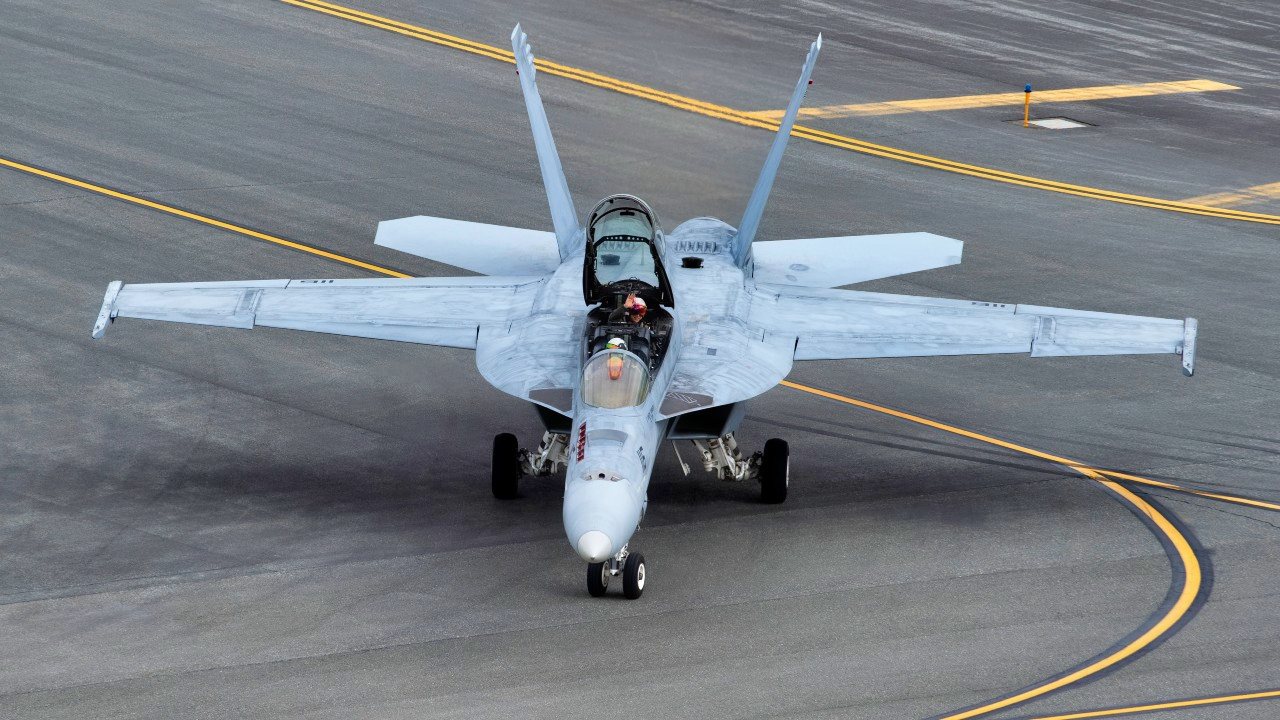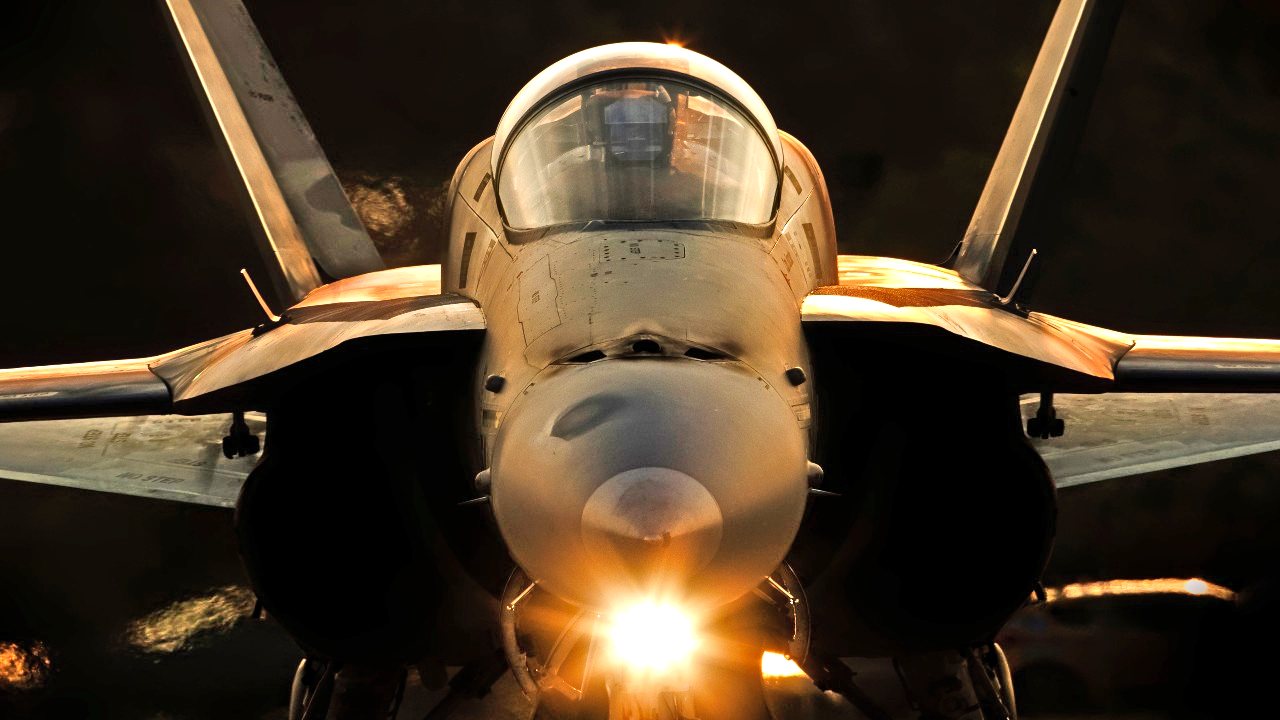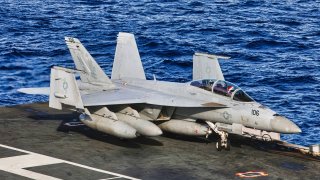5 Reasons the Navy's F/A-18 Super Hornet Block III Looks 'Unstoppable'
The F/A-18 Super Hornet Block III is the latest upgrade to the U.S. Navy's premier multirole strike fighter. Enhancements include a longer lifespan of 10,000 hours, improved survivability with reduced radar cross-section, and advanced networking capabilities with the Distributed Targeting Processor-Networked system.
Summary and Key Points You Need to Know: The F/A-18 Super Hornet Block III is the latest upgrade to the U.S. Navy's premier multirole strike fighter. Enhancements include a longer lifespan of 10,000 hours, improved survivability with reduced radar cross-section, and advanced networking capabilities with the Distributed Targeting Processor-Networked system.

-The aircraft also features a modernized cockpit with a 10x19-inch touchscreen display, allowing pilots to better manage the flood of battlefield data.
-Building on the Super Hornet's proven combat record, these upgrades will keep it operationally relevant until at least the 2040s.
-The F/A-18 Super Hornet is the U.S. Navy’s premier multirole strike fighter and the mainstay tactical platform of the carrier air wing.
F/A-18 Super Hornet Block III: The Navy’s New and Improved Strike Fighter
Since it replaced the aging legacy Hornet in the early 2000s, the Super Hornet has proven to be a highly successful aircraft in combat.
In order to keep the platform relevant in combat for decades to come, the Navy has begun upgrading its fleet to the Block III Super Hornet. The upgrades should keep the F/A-18 in the fight until at least the 2040s.
5 Things That Make the F/A-18 Super Hornet Block III Special
Let’s take a look at the five best attributes of these upgraded aircraft.
Longer Lifespan
One problem with keeping older aircraft airworthy is they begin to run up against their service lifespans, which are usually measured in hours. While these can be extended either administratively or technically, such extension carries an increased risk of systems failure, never a good thing for a combat aircraft. The new Block IIIs will run longer without this risk, as they have a lifespan of 10,000 hours, compared to the 6,000 hours of the Block IIs.
Improved Survivability
One of the major disadvantages of fourth-generation fighters in modern conflicts is their lack of stealth technology. New fighters like the F-22 and F-35 are nearly invisible on radar, allowing them to hide from surface and airborne threats. While the F-18 would have to be completely overhauled to match the small radar cross section of these advanced fighters, engineers at Boeing have made it more survivable. The details are a tightly kept secret, but reports indicate that the Block III Super Hornet is much harder to gain a precision radar lock on. An adversary might not be able to use a weapon against it, even after determining where the aircraft is.
Networking/MCs
Future battlefields will be absolutely flooded with information. Nearly every combat system, from ships, to aircraft, all the way down to individuals, will be plugged into a linked network, sharing and accessing information. The sheer amount of information could quickly become overwhelming, which is why the Block III’s new Distributed Targeting Processor-Networked mission computer is absolutely essential. When combined with the Tactical Targeting Network Technology link system, these mission computers will be able to process and synthesize the prolific amount of real time data and present only the necessary and relevant information to the pilot.

Cockpit
Even with the help of the new mission computers, pilots will have to interpret a lot of data. While previous Hornets had multiple displays that were manipulated with physical buttons, the Block III incorporates a large, 10x19-inch touchscreen display. This allows pilots to make the most of the information they receive and to act on it in a timely fashion.
Proven Technology
Perhaps the most significant aspect of the Block III is that these upgrades are being applied to a proven technology. The Super Hornet has completed combat deployments in a host of Middle Eastern countries, as well as operating consistently in the Pacific Ocean and the South China Sea. The improvements mean it can continue carrying out these missions, but more effectively, and without having to go through the growing pains of a brand new platform.
About the Author: Maya Carlin
Maya Carlin, National Security Writer with The National Interest, is an analyst with the Center for Security Policy and a former Anna Sobol Levy Fellow at IDC Herzliya in Israel. She has by-lines in many publications, including The National Interest, Jerusalem Post, and Times of Israel. You can follow her on Twitter: @MayaCarlin.
All images are Creative Commons or Shutterstock.
From the Vault
Russia Freaked Out: Why the U.S. Navy 'Unretired' the Iowa-Class Battleships
Battleship vs. Battlecruiser: Iowa-Class vs. Russia's Kirov-Class (Who Wins?)


